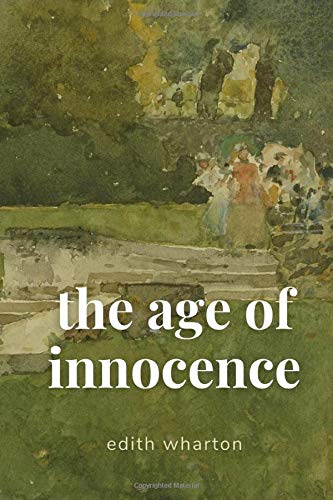Let’s chat about Edith Wharton’s classic, “The Age of Innocence.” This review will cover characters, societal norms, love, and sacrifice. It’s a wild ride through 1870s New York, full of drama and societal hoops. Ready your reading glasses; we’ve got some juicy stuff to talk about!
In a nutshell
“The Age of Innocence” by Edith Wharton is a classic novel of manners. Set in 1870s New York City, it explores themes of love, duty, and societal norms. The book captures the world of the upper class, where reputation and tradition rule. Relationships and personal desires clash with rigid expectations. Wharton paints a vivid picture of a time where choices are limited and innocence sometimes comes at the cost of happiness.
Exploring Character Development and Relationships in ‘The Age of Innocence’
“The Age of Innocence” by Edith Wharton is a captivating tale that presents some of the most intricate character development and relationships I’ve ever read. It’s like watching a soap opera unfold with all the drama, but set in the 1870s high society New York. Think Downton Abbey, but with way more corsets and less tea.
Our main guy, Newland Archer, is a man who seems to have it all: a prestigious job, a well-respected family, and a lovely fiancée named May Welland, who is as pure as freshly fallen snow. But then bam! In walks Countess Ellen Olenska, with a name that sounds like she’s just entered a ballroom with trumpets. Suddenly, Archer’s world flips upside down (and not in an amusing, “I slipped on a banana peel” kind of way). Ellen is all about that independent spirit and dares to challenge society’s norms, while Newland starts questioning everything he thought he knew about love and duty.
As Newland and Ellen’s relationship grows, Wharton does an amazing job of showing how their connection is like a time bomb waiting to explode – full of tension and longing. You gotta admire how she makes the characters so real that you want to both hug and shake them. But then we’ve got May, who seems naive but is more perceptive than a hawk. You can’t help feeling sorry for her, stuck in a story where she’s not the star.
Wharton’s exploration of these relationships makes you reflect on how societal expectations mold us. And speaking of societal norms and expectations, let’s chew on that juicy topic next!
Societal Norms and Expectations in The Age of Innocence
Ah, societal norms, those invisible chains wrapped around us like an overzealous scarf! In Edith Wharton’s ‘The Age of Innocence,’ these norms chase the characters like a determined cat after a too-slick mouse. The novel is a masterclass in illustrating just how tight corsets could squeeze—not just waists, but lives.
Set in the Gilded Age of New York, the book opens a window into a world where rules of decorum serve as the unspoken Bible. Newland Archer, our dashing protagonist, wrestles with these codes like they’re a particularly tricky jigsaw puzzle. I once tried to juggle bowling pins and can confirm it’s equally as difficult!
Marriage in this world is less about love and more like a business transaction. Fair warning: no room for a ‘just chilling’ status here. The expectations are as palpable as the scent of Aunt Mabel’s infamous cabbage stew. Newland’s own engagement to May Welland is a dance choreographed to suit social demands rather than personal desires. Have you ever felt pressured to follow the crowd, only to discover it’s leading you to an all-you-can-eat broccoli buffet? Yeah, it’s kinda like that.
The contrasting character of Ellen Olenska, however, is like the plot twist nobody saw coming. She’s the sparkly feather that tickles Newland’s nose, making him sneeze at conventions. Her defiance is both a breath of fresh air and a cautionary tale about what happens when you thumb your nose at societal norms.
As we make sense of these tangled social expectations, let’s lace up our boots and step into the captivating historical context and setting next!
The Historical Context and Setting of ‘The Age of Innocence’
Edith Wharton’s ‘The Age of Innocence’ is like a time machine that takes us straight to 1870s New York. I remember picking up this book thinking, “Oh, this is the kind of world where people wore too many layers and drank tea all day!” And guess what? I was kind of right! But there’s more to it. The world Wharton paints isn’t just about fancy clothes and tea parties—it’s like stepping into a world where people are bound by invisible chains of societal expectations.
I mean, imagine living in a place where attending the opera could make or break your reputation. The novel is set during the Gilded Age, a time in American history when everything looked shiny and nice from the outside but was a bit rusty on the inside. Wealthy families controlled not just the economy but also the social calendar. If you were not at the right place at the right time, gossip could be worse than a Monday morning hangover. Wharton captures the essence of this time with a sharp eye and a sharper pen.
The balls, the dinners, and the opera visits are not just scenes in the book—they’re arenas where characters fight for social survival. It’s fascinating how Wharton shows the characters trying to maintain their glittering facades when they’re just one social faux pas away from a scandal. Next, I’ll put on my Cupid hat and delve into how themes of love and sacrifice twirl around like dance partners in this spectacular Gilded Age ballroom.
Themes of Love and Sacrifice in The Age of Innocence
In The Age of Innocence, Edith Wharton expertly knits together themes of love and sacrifice, creating a tapestry that pulls at the heartstrings while also making you ponder just how much a person can surrender for the sake of others. I found myself engrossed in the lives of the characters, especially Newland Archer, caught in the tangled web of societal expectations and personal desires.
Newland, oh Newland! A guy torn between duty and his burning love for Countess Ellen Olenska. Unlike that time I had to choose between pizza and going to the gym, Newland’s choices have far more consequences. His heart says Ellen, while his head (and society) scream May Welland, the ideal partner in the eyes of New York’s upper crust.
Love in this novel isn’t all gooey-eyed and sweet, but a complex force that demands sacrifice. Wharton shows how love can be a prison, with bars made from society’s norms. When Newland ultimately sacrifices his love for Ellen, he upholds societal values but pays a hefty price in personal happiness.
As I turned each page, I marveled at Wharton’s ability to make me feel Newland’s internal battle so deeply. She portrays sacrifices made in the name of love not as heroic gestures but sometimes as acts of cowardice or conformity. This makes the reader question how much compromise is healthy in the pursuit of societal acceptance.
Would I recommend The Age of Innocence? Absolutely! If you love books that make you ponder the cost of love and the weight of sacrifice, this one’s a must-read. Just keep tissues handy; you might shed a tear or two!
Conclusion
Well folks, that’s the scoop on ‘The Age of Innocence’! Edith Wharton serves us a delicious cocktail of love, duty, and those pesky societal norms. Newland Archer’s story is a roller coaster of emotions, much like my last family reunion. Pros? Stellar character development and historical vibes. Cons? Some parts feel a tad slow. But hey, it’s still worth the ride. Thanks for sticking around, and remember, don’t judge a book by its dusty cover!



